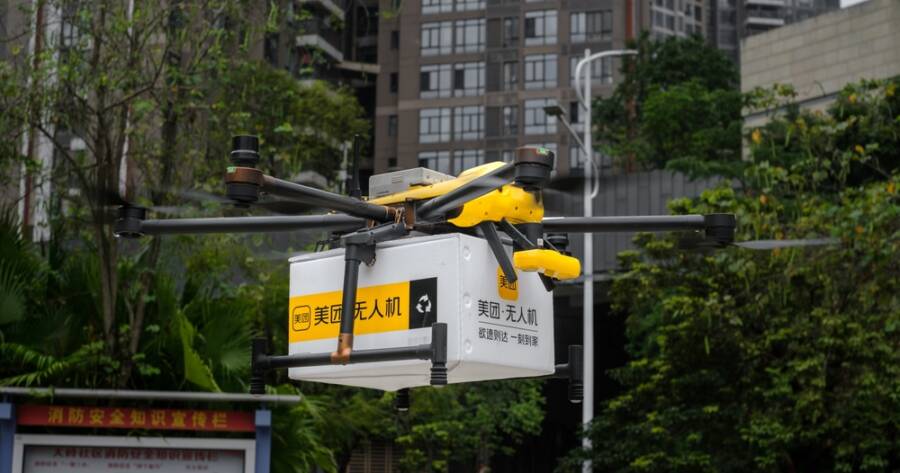Drone delivery systems are transforming the logistics industry, offering faster, more efficient, and cost-effective ways to move goods. Let’s explore how drone delivery systems are revolutionizing supply chains and reshaping the future of logistics.
Speed and Efficiency in Last-Mile Delivery
One of the most significant advantages of drone delivery systems is their ability to speed up last-mile delivery. The last mile refers to the final stage of a product’s journey from a warehouse to the customer. Traditionally, this part of the delivery process is the most expensive and time-consuming. Drones offer a solution by bypassing road traffic and delivering goods directly to consumers in a fraction of the time.
Companies like Amazon and Walmart have already begun testing drone deliveries to provide faster service to their customers. Drones can deliver small packages in minutes, significantly reducing delivery times for urban and rural areas. This increase in speed not only improves customer satisfaction but also reduces delivery costs by cutting down on fuel and labor expenses. 1
Reducing Environmental Impact
Drone delivery systems also have the potential to lower the environmental impact of supply chains. 2 Traditional delivery trucks rely on fossil fuels, contributing to greenhouse gas emissions. Drones, on the other hand, are often powered by electricity, which can be sourced from renewable energy. This makes them a more environmentally friendly option for delivering goods.
In addition, drones can reduce the number of vehicles on the road, which helps decrease traffic congestion and emissions. By adopting drone technology, companies can move toward more sustainable logistics practices, aligning with the growing demand for greener business operations.
Overcoming Geographic Barriers
Drones are particularly useful for delivering goods to hard-to-reach locations. In remote or rural areas, traditional delivery methods may be inefficient or even impossible due to poor infrastructure. Drones, however, can fly over obstacles like mountains, rivers, or congested city streets, making them ideal for delivering essential items like medical supplies or emergency equipment.
For example, companies like Zipline are using drones to deliver medical supplies to remote areas in Africa. This technology allows healthcare providers to receive life-saving medicines and vaccines quickly, even in locations with limited access to roads or transportation.
Cost Savings for Businesses
Drone delivery systems can also help businesses reduce costs. Traditional logistics require significant investments in transportation, fuel, and labor. Drones, however, can operate autonomously, reducing the need for drivers and vehicles. Once the infrastructure for drone deliveries is in place, companies can achieve significant savings on operational costs.
Additionally, drones can be deployed to deliver smaller, lightweight packages, which are often the most expensive to transport using conventional methods. By using drones to handle these deliveries, businesses can cut costs while improving efficiency.
Challenges and Regulatory Hurdles
While drone delivery systems offer many advantages, there are still challenges to overcome. One of the biggest obstacles is regulation. Governments around the world are working to establish clear rules for the safe and legal use of drones in commercial operations. Issues like air traffic control, privacy concerns, and safety standards need to be addressed before drones can become a mainstream part of the supply chain.
Moreover, the technology itself is still evolving. Drones must be able to navigate complex environments, avoid obstacles, and operate in various weather conditions. Companies are investing heavily in research and development to overcome these technical challenges and make drone delivery systems more reliable.
Learn More About Drone Delivery Systems
Drone delivery systems are revolutionizing supply chains by offering faster, more efficient, and environmentally friendly solutions for last-mile delivery. As companies continue to adopt this technology, drones will play a critical role in overcoming geographic barriers, reducing costs, and improving customer service.
However, to fully realize the potential of drone deliveries, businesses and governments must work together to address regulatory challenges and technological limitations. In the future, drones will likely become a key component of global logistics, transforming the way goods are delivered.
